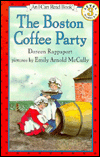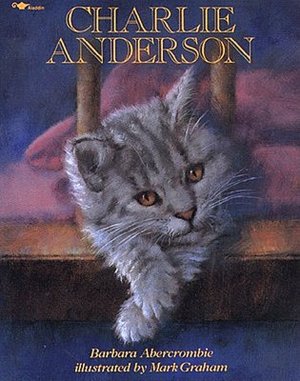Last time, I wrote about modeling the use of a chart for tracking inferences. This week, students were in charge, working in pairs or triads to read a book and create the inference chart. It has worked fairly well. Here are some things to keep in mind if you are trying to help struggling readers make and record their inferences.
Selecting texts
I chose texts that were quite easy for students. With this lesson, I wanted them to concentrate on making inferences, not struggle with decoding. At the same time, the texts need to have some meat to them.
The Boston Coffee Party
A fabulous bookroom find! I like this one because it's an easy read, but has some lasting questions to think about. The illustrations are informative and engaging.
Sam the Minuteman
Another good find with a Revolutionary War theme.
My Rotten Red-Headed Older Brother
Some students had already read this earlier this year, but there is value in going back to a book, especially for the purpose of making and tracking inferences. It's been a favorite of the groups who have been reading it.
A Chair for My Mother
This book is good for some students. The flashback in the book makes the narrative a little more complex, even though the text is quite simple.
Charlie Anderson
This cute book has a surprising ending. Great for the animal loving kids!
Scaffolding for Making Inferences
But even with good modeling and great texts, some kids really struggle. This is the hardest part of making inferences--getting kids to animate the process. In fourth grade and beyond, there are some kids who are happy to read the words aloud and not go any further.
To help the kids realize that they need to make inferences, I put Post-Its at different spots in the books. (This actually isn't as time-consuming as it sounds. I quickly did this while the students were doing independent reading, putting questions in only one book per group.) For some groups, I wrote a specific question (How do you think the character feels? What trait could describe___?); for others, I just put a note that said, "Make an inference here."
Tools for Students
I love, love, love giving kids lists of related words. This emotion chart is another good scaffolding tool for students. They really do refer to it as they read, looking for the words that capture their inference. It's always encouraging to hear kids talking about whether a character would feel "depressed" or "grief-stricken" in a given situation, referring to the text to support their ideas. A character traits chart is also helpful. These tools give them more support in making inferences.
Listen in, but don't help too much
If I have chosen appropriate books and built the proper scaffolding, I shouldn't have to help groups of readers too much. Instead, I go around and listen to the conversations that kids are having. I want these readers to grow and become independent--I need to step away and let them do this on their own. (For me, this is probably the hardest part!)
As I listened to kids, I did hear a few weird inferences. This doesn't concern me as much as it once did. I think it's part of the practice process, reflecting a bit of risk-taking for the reader. When kids read together, they'll often talk each other out of these weird inferences.
Why the inference chart again?
Part of my goal is to help students realize how often they are making inferences...and be able to identify both the text clues and their own background knowledge they are using. The chart is a great low-risk tool to help them do this.



Hi Emily,
ReplyDeleteI just wrote you a lengthy post but it disappeared into cyberspace! So frustrating! Anyway, I was wondering about your Max Mission passages. I was using them with a 19 year old student with Asperger's Syndrome who struggles with reading comprehension. I found 4 passages on Teachers Pay Teachers but wondered if you had more? If so, where can I find them? I just ordered your book on inferencing from Amazon and am anxiously awaiting its arrival.
Thanks,
Karen
Hello! I'm glad that you like the Max Mission passages. I have a few other similar ones that aren't posted online...email me at elkissn at yahoo.com and I can send them your way. :) Thanks for buying the book!
ReplyDelete